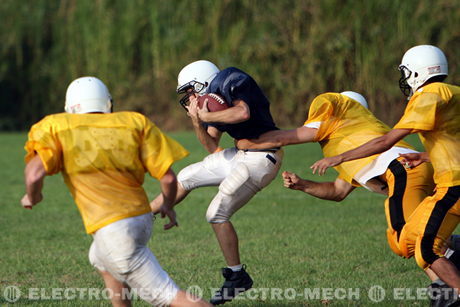
The original idea of Cleveland Stadium was a combined effort of Cleveland City government officials, real estate investors and Cleveland Indian team officials. The purpose was to give the team a professional and sharp venue to play while increasing revenue for the Cleveland Ohio downtown area. The additional hopes in 1930 were that it would attract the Summer Olympics games. This hope was dashed when Los Angeles received the coveted award for the games.
When construction started on Cleveland Stadium, the media cruelly dubbed the venue “The Mistake by the Lake”. When it was completed, the stadium hosted the Cleveland Indians as well as the National Boxing Associated World Heavyweight Championship. Seating capacity for baseball and football varied, but with an average of around 80,000.
From mid 1932-1933 seasons, The Indians played all of their home games at Cleveland Stadium; with attendance at an almost record high of over 80,000. The design of the overly large home field created a ruckus within their fan base. Complaints indicated that the home field size didn’t allow for as many home runs. When the Depression hit, the economy plummeted and game attendance was drastically reduced. The Indians were forced to relocate their games to the old location of League Park. As time progressed the venue began to emerge again as the place to go for the Cleveland teams. The Cleveland Rams football team played on the field for two years before relocating to the newer Shaw Stadium.
Most noted for the east end center field bleachers, commonly known as the “Dawg Pound”; this was home to many fans that would often ‘bark’, wear dog masks and even throw dog biscuits to cause the opposing players to lose focus on their game.
By the 1970’s the more stylized stadiums were becoming popular. The Cleveland Stadium was beginning to be seen as an older stadium. The location itself was a problem. Near Lake Erie, the winter cold winds battered the fans and players alike and in the summertime, the stadium lights attracted insects, including mayflies and midges. The insects were so prevalent that in 2007, a television announcer made note of them on the pitcher’s mound.
Cleveland Stadium was the scene of many college football games, religious events and even concerts. Concerts included World Series of Rock featuring well known acts such as The Beach Boys, Pink Floyd, The Rolling Stones and Aerosmith. While the concerts were discontinued due to racial conflicts, a 1995 Rock and Roll Hall of Fame concert that was held had performances from The Allman Brothers Band, James Brown, Bob Dylan and Johnny Cash, among other famous artists. The stadium was the backdrop for such notable films as “The Fortune Cookie”and “The Kid From Cleveland”.
Improvements over the years for the stadium included new luxury seating/suites and electronic scoreboards. Legal problems and poor management decisions plagued the stadium. Additional construction areas needed to be reinforced and, the decision was made to finally demolish Cleveland Stadium. Chunks of the stadium were placed in Lake Erie to assist in forming an artificial reef.
